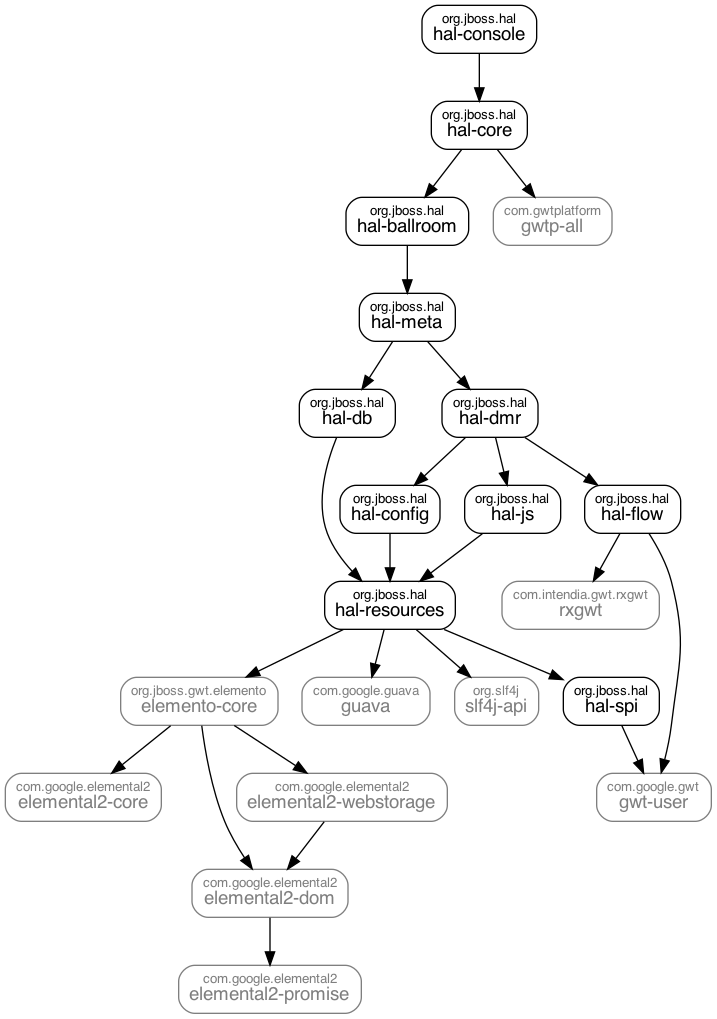Architecture
HAL is a client side RIA without server side dependencies. It is a GWT application - which means it’s written almost completely in Java. GWT is used to transpile the Java code into a bunch of JavaScript, HTML and CSS files. HAL also uses external JavaScript dependencies. These dependencies are managed using NPM and bundled using Parcel. NPM and Parcel are integrated into the Maven build using the maven-frontend-plugin.
We use the model view presenter pattern and GWTP for its implementation. The main business logic resides in presenters like the DataSourcePresenter. Presenters are responsible for holding state and talk to the management interface. The views are used to hold all UI related code. They leverage the PatternFly components and are implemented using Elemento. Views register event handlers for user interaction and interact with the presenters. The model in this scenario are usually instances of ModelNode which are the result of DMR operations. They’re passed around between the presenters and views.
For more details about the different parts of the console and how they work together see building blocks.
Technical Stack
In a nutshell the console uses the following technical stack:
Maven Modules
HAL consists of many maven modules, each of which serves a specific purpose. Here’s the list of the most important modules (a-z) and a quick description:
| Module | Description |
|---|---|
| hal-ballroom | Core UI classes like Form, Dialog or Table |
| hal-bom | Bill of materials (declaration of all HAL modules) |
| hal-build-config | Build configuration like checkstyle rules, code formatting and licenses. |
| hal-code-parent | Parent POM for all modules with code |
| hal-config | Configuration classes for the environment, operation mode, current user and its roles |
| hal-console | Main application containing the GWT entry point |
| hal-core | Core HAL API |
| hal-db | Thin wrapper around PouchDB |
| hal-dmr | DMR related code to execute operation, read results and work with model nodes |
| hal-flow | Execute asynchronous tasks in order |
| hal-gwt-parent | Parent POM for all GWT related modules |
| hal-js | JavaScript related helper classes |
| hal-meta | Metadata related classes to encapsulate the different parts of the resource descriptions |
| hal-parent | Parent POM for all other modules |
| hal-processors | Annotation processors for code generation |
| hal-resources | I18n resources, images and HTML snippets |
| hal-spi | SPI related classes and annotations |
| hal-standalone | Quarkus based app to start the console in standalone mode |
| hal-testsuite-resources | Maven setup to assemble classes from different modules and make them available as one dependency for the test suite |
| hal-theme-parent | Different HAL themes |
| hal-theme-eap | Theme used for JBoss EAP |
| hal-theme-hal | Theme used for the standalone mode |
| hal-theme-wildfly | Theme used for WildFly |
Dependencies
Here’s the dependency graph of the main maven modules and the main external dependencies as generated by the degraph-maven-plugin:

